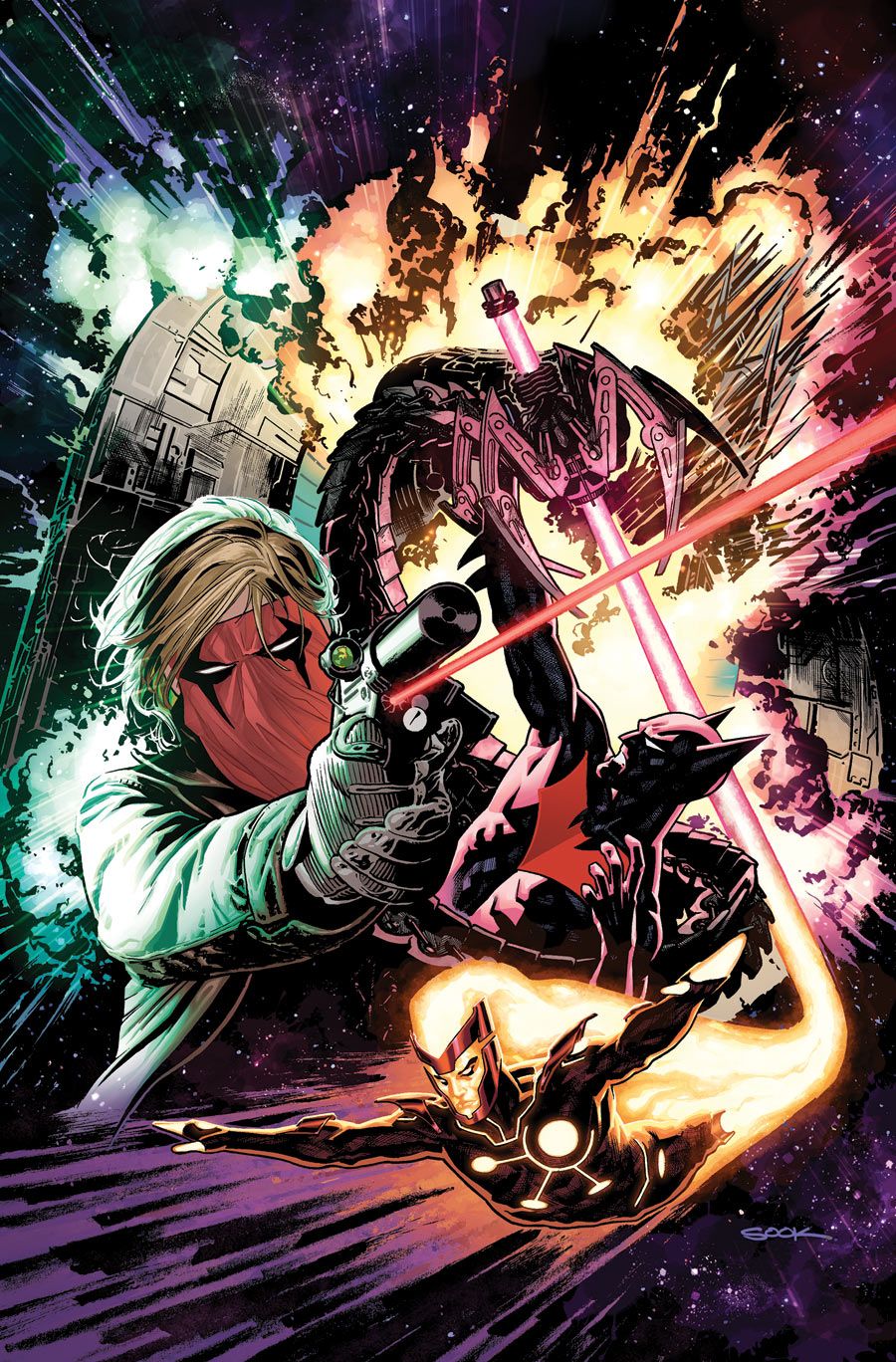DC Comics' second weekly series officially commences in "Futures End" #1, just days after the release of issue #0 on Free Comic Book Day. The series' writing team of Brian Azzarello, Jeff Lemire, Dan Jurgens, and Keith Giffen, along with artist Patrick Zircher, takes readers on a spin through a cross section of a noticeably darker DC Universe five years into the future. It's not exactly a tour through the well-traveled parts of the DCU, as the focus is on several former Wildstorm characters, a decidedly disharmonious Firestorm, and future "Batman Beyond" Terry McGinnis.
Presumably the Big Three and the rest of the Justice League will be featured soon enough, as they were seen in the further future-shifted FCBD issue. "Futures End" #1 doesn't feature any time-hopping and is plenty easy to follow, in large part because of the introductory nature of the story.
As such, it doesn't evoke much in the way of emotion; a lot of familiar characters get whacked along the way, but these occurrences have about the same impact as a breeze on a brick wall. This future, whether intended to be the definitive New 52 or not, at this point is no different than any other dark and neo-dystopian alternate reality that readers have no vested interest in, so even working up a shrug in response to these deaths is a challenge.
While it doesn't generate much emotion, it still manages to eke out some interest. The flash-forward nature of "Futures End" #1 employs a now-commonplace storytelling device, but it's nonetheless effective. Moving the DCU years into the future enables the writing team to easily wow readers with a shocking slew of changes, and it's almost impossible to put the issue down without some lingering curiosity as to how things got this way and what it will lead to next.
This kind of thing has been done countless times before, in pop culture in general, comics in particular, and at DC more than once, as recently as their "One Year Later" jump-ahead several years ago. It might be a cheap and derivative gimmick, but it works. It's hard not to like at least certain elements of the story, like weaving Terry McGinnis' character into the DCU; this story is the perfect venue for this introduction.
Squeezing out a passably enjoyable story doesn't excuse its blatant scripting faults, though. Questionable logic early on (the effect of mass on Bruce Wayne's time machine) has readers scratching their heads while they're trying to move on to the rest of the issue, and a butchered, amalgamated sampling of a couple of lines from "Star Wars" are some pretty surprising lapses. The script is otherwise competent, with the Batman sequence again being the highlight, with some tight and snarky banter between Terry and A.L.F.R.E.D. The internal dialogue between Firestorm's two halves doesn't match up, however, as Ronnie and Jason's bickering repeatedly keeps rehashing the same topic of Ronnie's commitment to being Firestorm.
The issue's best accomplishments come from Zircher, who gets to show off by drawing a wide array of DC characters. His interpretation of the future Batman in the DCU translates well from the character's animated style, and is impressive enough to establish a definitive look that serves as an excellent template for other artists. His Grifter looks pretty imposing as well, although a character with a covered face and trenchcoat doesn't lend itself to much in the way of unique interpretation. Even the familiar but very dead character featured on the final splash page looks impressively morbid.
"Futures End" #1 is an entertaining enough introduction to this new weekly series, despite its dominant been-there-done-that vibe. The writing collective uses a lot of familiar storytelling elements but nonetheless manage to deliver an enjoyable debut that's helped along by a strong artist. It's not as good as it could have been, but it's better than what many might be expecting.

